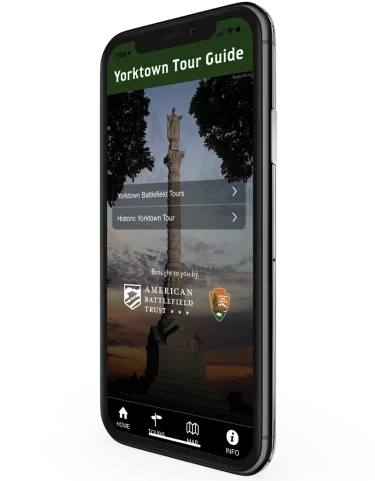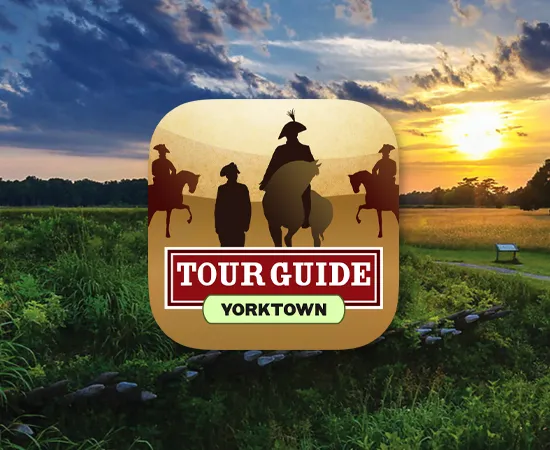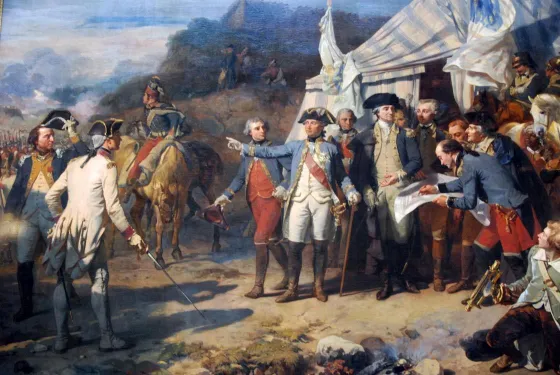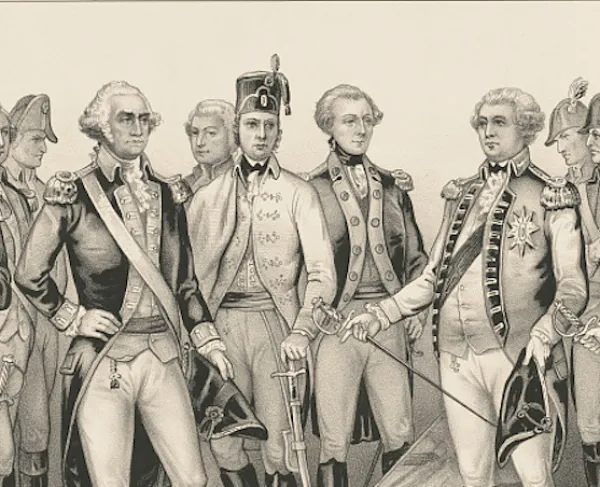American Battlefield Trust and Colonial National Historical Park announce new digital Tour Guide for the Revolutionary War’s Yorktown Battlefield

Yorktown, VA – As visitors begin returning to historic sites this summer, travelers to the Yorktown Battlefield at Colonial National Historical Park have a new resource to explore that landscape at their own pace, on their own schedule. The new Yorktown Tour Guide app, developed by the American Battlefield Trust on behalf of the park, takes users on three distinct tours — the historic town, the battlefield and the allied encampment — with audio interpretation at each of 21 stops. While the app is GPS-enabled, providing integrated driving directions to individual sites within its map feature, images and historical content can be accessed from anywhere on the globe, bringing history to those not yet able to visit in person. The free app is now available for download via the App Store and Google Play, or online as a web app, available through any web browser. Visit www.battlefields.org/yorktownapp for all options.
“We are thrilled to launch this new option for visitors to the Yorktown Battlefield and expand our array of interpretive resources,” said Kym Hall, superintendent of Colonial National Historical Park. “From ranger-led programs to physical pamphlets and now into the digital realm, the National Park Service strives to help each visitor find their preferred way to explore our historic resources. Working with likeminded partners, including the American Battlefield Trust helps us fulfill this mission.”

“During the COVID-19 pandemic the Battlefield, tour roads and historic town area have remained open to pedestrians and bicyclists to allow visitors to explore and exercise in a socially distant manner,” Hall said. “This app is a well-timed new tool to aid in that exploration.”
American Battlefield Trust Chief Digital Officer Larry Swiader emphasized that the beauty of an approach like this app is that it can function for those on the battlefield, as well as those learning history from home. “With photos and audio content, as well as place-based functionality, the Yorktown Tour Guide can bring history to life whenever and wherever you are when you want a peak into the past. It really is like having a tour guide in your pocket,” he said.
The Trust is no stranger to digital battlefield interpretation, having launched its first Battle App® guide in 2010. All 19 of the titles that have been introduced in that series feature Civil War battles and campaigns, reflecting the organization’s origins focused exclusively on that conflict. The Yorktown Tour Guide, the Trust’s first foray into the Revolutionary War using this medium, will certainly not be its last, particularly as the nation prepares to mark the 250th anniversary of its independence in 2026. Learn more about the entire suite of Trust mobile apps at www.battlefields.org/mobileapps.
Another interesting feature of the app is that it includes tours of three distinct elements of the national historical park’s Yorktown unit: the 1781 battlefield, the Franco-American allied encampment and historic areas of the York Town community, which dates to 1691. While users are encouraged to take all three tours, each one does function independently. The ability to view all 21 tour stops on a unified map helps users understand the interplay between the siege and the seaport community that preceded it.

The Siege of Yorktown was the final major engagement of the Revolutionary War, coming after more than six years of conflict. Merely sustaining the army for that duration had been a major accomplishment for the Americans, who did not have much money, food or clothing. But the cause had received a major boost when 5,500 French troops, commanded by Comte de Rochambeau, arrived at Newport, Rhode Island, in 1780. Together, Rochambeau and American General George Washington planned a coordinated offensive the British, initially around New York. But when the expected British fleet instead aimed for Chesapeake Bay to resupply the army of General Lord Charles Corwallis, the operation shifted to Yorktown, Virginia.
After a grueling forced march, the Franco-American army arrived on September 28 and immediately began the hard work of laying siege, digging a series of parallel trenches which brought troops and artillery close enough to inflict damage on the British. On the afternoon of October 9, the Allied barrage began, but it became apparent that an infantry assault would be necessary to seize the defenses. Once Redoubts 9 and 10 fell to the allies on October 14, the British position became untenable. They began negotiations for surrender on October 17, formally laying down their arms two days later. Despite the allied victory at Yorktown, the Treaty of Paris, formally ending the American Revolutionary War was not signed until 1783.
###
About the American Battlefield Trust
The American Battlefield Trust is dedicated to preserving America’s hallowed battlegrounds and educating the public about what happened there and why it matters today. The nonprofit, nonpartisan organization has protected more than 52,000 acres associated with the Revolutionary War, War of 1812, and Civil War — including 1,183 acres at Gettysburg. Learn more at www.battlefields.org.
About Colonial National Historical Park
Colonial National Historical Park (NHP) administers two of the most significant sites in English North America: Historic Jamestowne, the first permanent English settlement in North America in 1607, jointly administered with Preservation Virginia, and Yorktown Battlefield, the final major battle of the American Revolutionary War in 1781. Situated on the Virginia Peninsula, these sites are connected by the 23-mile scenic Colonial Parkway. Colonial NHP also includes Green Spring, the 17th century plantation home of Virginia's colonial governor, Sir William Berkeley, the Cape Henry Memorial, which marks the approximate site of the first landing of the Jamestown colonists on the Atlantic Coast in April of 1607, and Tyndall’s Point in Gloucester County Learn more at www.nps.gov/colo.





